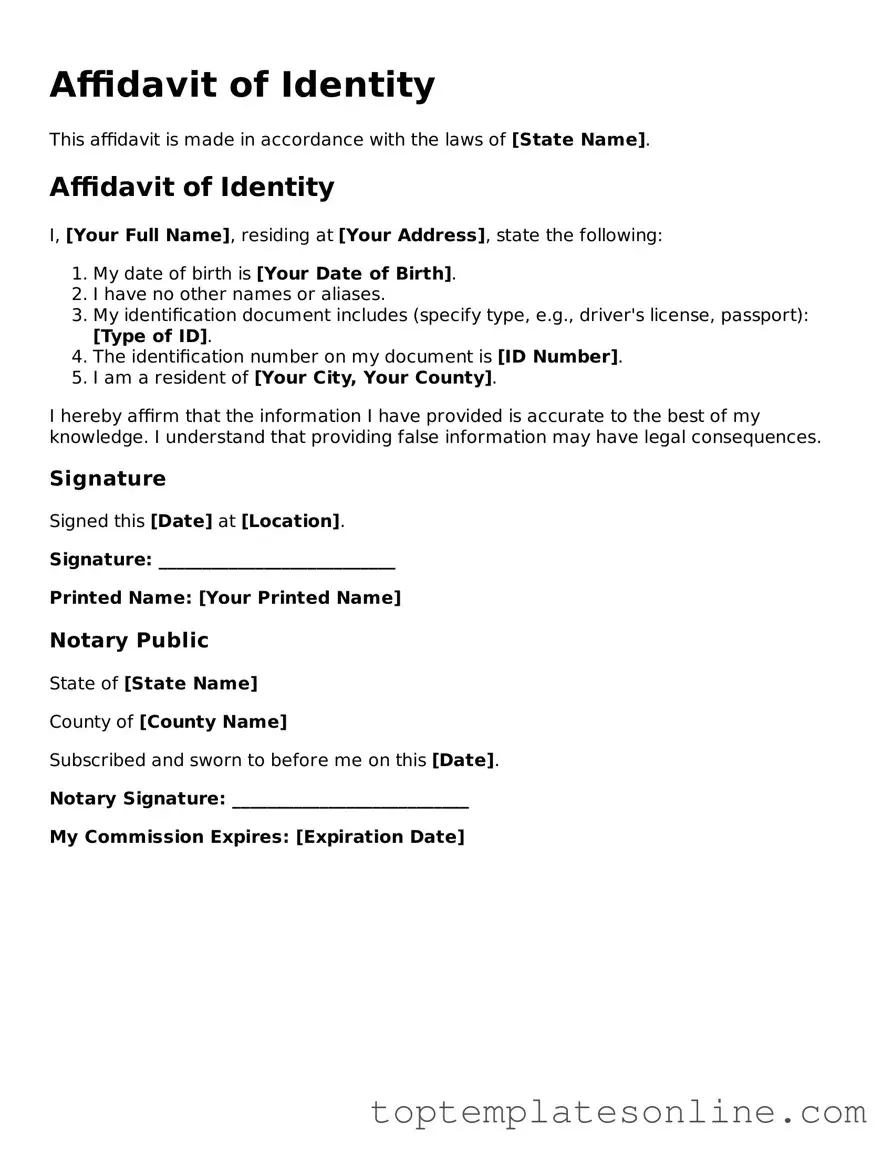The Affidavit of Identity form serves as a crucial tool for individuals seeking to verify their identity in various legal and administrative contexts. This form is often required when a person needs to affirm their identity for purposes such as obtaining a government-issued identification, accessing financial services, or participating in legal proceedings. By completing this affidavit, an individual declares under oath that the information provided is true and accurate, thereby ensuring the integrity of the identification process. The document typically includes personal details such as the individual's full name, date of birth, and any other identifying information that may be necessary. Additionally, it may require a signature, which must be witnessed or notarized to confirm the authenticity of the declaration. Understanding the importance of this form is essential, as it not only protects individuals from identity theft but also helps maintain the overall security of systems that rely on accurate identification. As society becomes increasingly reliant on digital verification, the Affidavit of Identity stands as a steadfast reminder of the importance of clear and honest representation of one’s identity.
